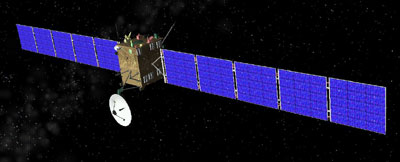Don’t say it can’t work when it comes to solar.
While "experts" have long claimed that only nuclear power – not solar – can provide the propulsion needed to explore deep in space, they have just been proved wrong.
This month, Rosetta – a solar-powered space probe launched by the European Space Agency in 2004 – successfully rendezvoused with a comet 375 million miles from the Sun.
This is the first time a space mission has traveled beyond our main asteroid belt powered solely by solar cells.
Over the next year, it will fly beside the comet, sending high resolution images and other information from its sensors back to Earth. It will also send a "lander" onto the 2.5 mile wide comet where it will drill into the comet and perform various experiments.

The European mission is able to accomplish this because of a new solar cell technology called Low-intensity Low Temperature Cells. The European Space Agency plans to use the technology for an upcoming mission to explore Jupiter’s icy moons.
And Juno, launched by NASA in 2011, will arrive at Jupiter in two years propelled by the same solar technology.
Amazingly, the solar cells allow Rosetta to operate where sunlight is only 4% of the intensity on Earth.
Until now, missions into deep space used nuclear radioisotope thermal generators and there have been accidents, says Karl Grossman, who authored "The Wrong Stuff: The Space Program’s Nuclear Threat to Our Planet" and wrote and narrated the TV documentary "Nukes in Space: The Nuclearization and Weaponization of the Heavens." In one example, a US satellite actually fell back to Earth in 1964.
There still may be problems with Rosetta, says Grossman, such as gases from the comet that impede its ability to fly along with it. "But if the Rosetta mission is a success it will be a superb example of a space mission that represents no nuclear threat to life on Earth and of a quest with the highest of purposes – exploring the mysteries of the Solar System and the origins of life."
Read our article, NASA Launches Orbiting Carbon Observatory.
Learn more about Rosetta:
